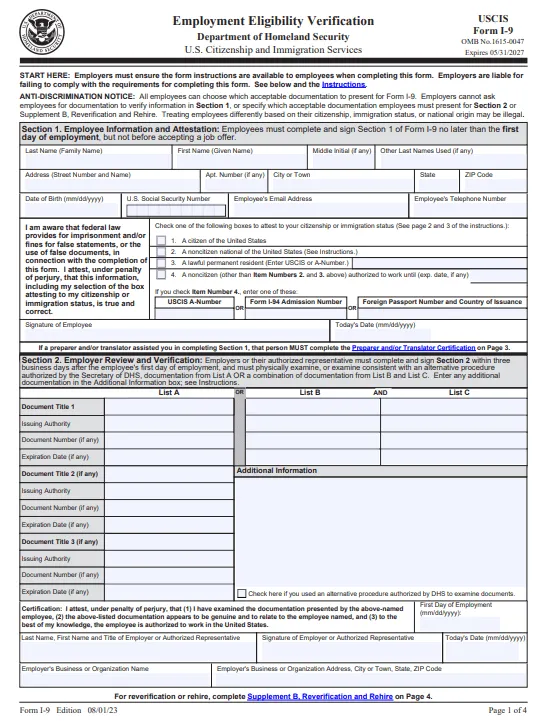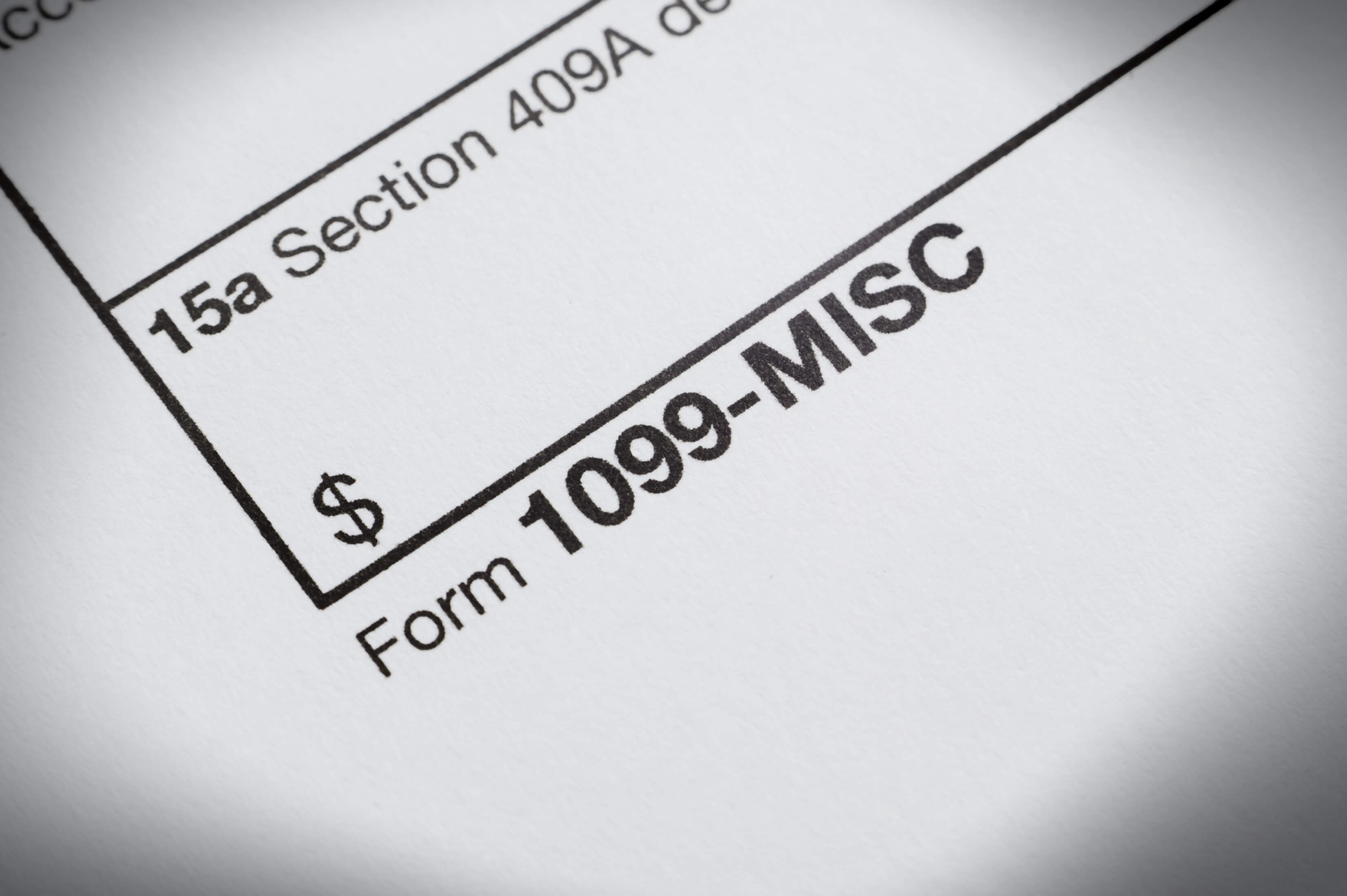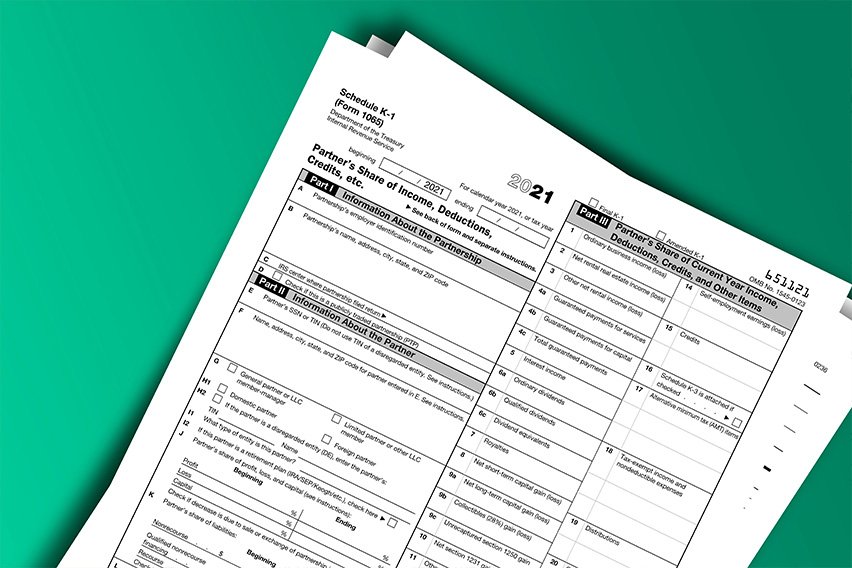How To Calculate Payroll Taxes: Step-by-Step Guide

Like much of the United States tax system, payroll taxes can be complex. Since there are several federal and state taxes to be applied, calculating payroll taxes is a detailed process. To further add to the complexity, some taxes are paid by the employee, some are paid by the employer, and others are shared by both.
Typical payroll taxes include federal, state, and local income taxes, Social Security and Medicare, unemployment, disability insurance, and workers’ compensation.
Understanding payroll taxes is essential for business owners and employees alike. With a firm grasp of how to calculate payroll taxes, you’ll have peace of mind knowing that your taxes are paid and fully compliant, ensuring that you won’t be subject to penalties from the IRS.
In this article, we’ll explain how to calculate employer payroll taxes, cover the various components that makeup payroll taxes, and provide information on tax percentages withheld from employee paychecks.
Key Takeaways
- Employers must collect the appropriate amounts of payroll taxes from each employee’s paycheck based on their Form W-4, deductions, and tax withholdings.
- Some payroll taxes are paid by only the employee, only the employer, or sometimes by both.
- The first step to calculating payroll taxes is to begin with gross pay for a pay period, then to calculate the federal income tax withholding, other payroll taxes (FICA), deductions (health insurance, etc.), until you reach the net pay for that period.
Table of Contents:
- What Are Payroll Taxes?
- How To Calculate Payroll Taxes
- Take Control of Your Finances: Simplify Payroll Tax Calculations
- Frequently Asked Questions

What Are Payroll Taxes?
Payroll taxes are a type of taxation paid by full-time employees and their employers. The employer withholds these taxes from each worker’s paycheck and remits them to the U.S. Treasury on behalf of the employee, resulting in the employees paying their annual tax liability gradually rather than all at once.
Employers regularly submit these withheld payroll taxes, along with the company’s share of payroll taxes. Payroll taxes withholding from employee paychecks is required by law.
Payroll taxes can include the following types of taxes.
Federal Income Taxes
This is the tax that most people earning an income in the U.S. will pay to the federal government. Federal income taxes are paid for by the employee via income tax withholding.
State and Local Income Taxes
Like federal income tax, state and local income taxes are paid for by the employee where applicable. Not all states and municipalities charge income tax.
Social Security and Medicare Taxes
Also known as Federal Insurance Contributions Act (FICA) taxes, these taxes are split 50/50 between the employee and their employer. The tax rate is 15.3%.
Federal Unemployment Tax Act (FUTA)
FUTA taxes provide federal unemployment compensation for workers who lose their jobs in certain circumstances. This tax is paid for by the employer. The FUTA tax rate is 6% of the first $7,000 of each employee’s annual wages.
State Unemployment Tax Act (SUTA)
SUTA is a state-level version of FUTA, again offering unemployment compensation. This tax is paid by the employer in most (but not all) states.
State Disability Insurance
This tax covers compensation for workers who become unable to perform their work due to a disability. Depending on the state, it’s paid for by the employee, employer, or both.
Workers’ Compensation
Workers’ compensation is a state tax that pays for cash benefits for workers who become ill or injured at their workplace. It’s paid by the employer.
How To Calculate Payroll Taxes
Now that you understand the different types of taxes required to be paid, we’ll explain how to calculate payroll taxes manually.
Step 1: Gather All Required Employee Documents
Before you can start calculating payroll taxes for your employees, you’ll need to obtain their W-4 tax forms and other documentation. Usually, these are filled out by employees shortly after being hired at a company, allowing the employer to get organized with payroll taxes and tax withholding as soon as possible. The required employee documents include the following.
Form W-4: Employee’s Withholding Certificate
All new employees need to submit a filled-out IRS Form W-4. This form informs employers of how much they’ll need to withhold in federal income tax (FIT) from that employee’s paychecks. As of 2020, Form W-4 has been reworked slightly to include a 5-step process and a new set of withholdings determination methods for determining withholding amounts.
If an employee wants to have more tax withheld or wants to request to be exempt from FIT withholdings on their paychecks, they can indicate this on their Form W-4.
State W-4 (as applicable)
Some states have their own, state-level Form W-4, which is required to calculate state and/or local income tax withholding. In states that don’t require a State W-4, the FIT Form W-4 is sufficient.
Direct Deposit Authorization Form
Though not technically required for payroll taxes, it’s still recommended that employers collect direct deposit authorization from their employees. This is done through a direct deposit authorization form (provided by the employee’s bank and filled out by the employee) and is sometimes further verified with a voided check.
Form I-9: Employment Eligibility Verification
All new employees must fill out Form I-9, which confirms that they’re legally allowed to work in the United States, whether as a citizen, permanent resident, visa holder, or another condition. Employment eligibility is confirmed with either a U.S. passport or both their Social Security card and driver’s license.

Employers are required by law to obtain a signed copy of Form I-9 for every new employee before work begins, and Section 2 of the form must be completed within 3 business days of the employee’s first day of work.
Step 2: Calculate Gross Pay
With all tax forms completed and organized, you can begin calculating the payroll taxes themselves. This begins by calculating gross pay for the pay period, which is the amount paid to an employee before any taxes are withheld from the paycheck. The process for calculating gross pay differs depending on whether the employee is paid hourly or with a salary, and how often (monthly, semi-monthly, biweekly, weekly) they’re paid.
Hourly Employees
Gross pay for hourly wage employees is calculated by simply multiplying hours worked during a given period by their hourly wage. So if you’re calculating gross pay for a laborer on your job site who works 40 hours a week for $38 per hour, their gross pay would be $1,520 per week.
You’ll also have to factor any overtime into this calculation. Overtime pay is usually 1.5 times the original wage—so if that same laborer worked 5 hours of overtime in a week, you would add an additional $285 to their weekly pay of $1,520, totaling $1,805 in weekly gross pay.
Salary Employees
Since salaried employees are typically exempt from rules regarding overtime pay, their gross pay should remain consistent except for when they take unpaid leave or receive a salary adjustment. To calculate gross pay for a salaried employee, just divide their yearly pay by the number of pay periods in a given year.
For example, if a manager in your store earns $65,000 per year, and they’re paid 2 times per month, you would divide $65,000 by 24 (12 months multiplied by 2 paydays per month) to arrive at a gross pay figure of $2,708.33 per pay period.
Be sure to factor any payments besides salary into your gross pay calculations. This means bonuses, tips, and commissions that the employee earns, as well as any gifts you might give them.
Step 3: Calculate Employee Tax Withholdings
With gross pay calculated for your employees, you’ll then compare that information against the details from their Form W-4s to determine how much to withhold from their paychecks for the various taxes they’re responsible for paying. These include:
Federal Income Tax (FIT)
FIT is calculated based on the employee’s Form W-4 information, their taxable earnings, and the frequency of their pay periods. There are two ways to calculate FIT withholding for employees:
1. Wage Bracket Method
This is a straightforward approach that lets you calculate FIT withholding based on the employee’s taxable wages, marital status, allowances, and payroll period. No calculations are required for this method, but it stops at 10 allowances and limits the number of wages that can be factored in.
2. Percentage Method
This method has no wage or allowance limits, making it more versatile. You’ll have to calculate the value of each employee’s W-4 allowances based on their pay period frequency. Subtract this allowance value from their gross earnings for the pay period to get the amount of their gross pay subject to withholding.
To learn more about these methods, rates, and allowances, follow our guide titled How to Calculate Withholding Tax, which will provide you with a detailed explanation.
FICA Taxes
Federal Insurance Contribution Act (FICA) taxes cover Medicare and Social Security. These taxes must be withheld from all employees unless they’re exempt.
- Medicare
A flat rate tax of 1.45% of gross pay with no annual limit. Employees earning more than $200,000 per year are subject to an Additional Medicare Tax of 0.9%. The employer must also pay 1.45% to Medicare. - Social Security
A flat rate tax of 6.2% up to an annual wage limit of $168,600. Any earnings above $168,600 are exempt from this tax. In other words, employers can withhold an annual, cumulative maximum of $10,453.20 in Social Security taxes for each employee for the 2024 tax year. Employers must also pay 6.2% to Social Security.
Bear in mind that employees only pay half of the required amount in FICA taxes, with the responsibility of paying the other 50% falling upon the employer. Essentially, you will have to match the amount you withhold from each employee when remitting FICA taxes to the government.
State and Local Taxes
While some states, such as Florida, have no state income taxes, many parts of the country do require state or local taxes to be withheld from employee paychecks.
Be sure to check the tax regulations in your area to ensure you’re compliant. The process varies depending on where you are but is generally quite similar to the methods used for calculating federal income tax withholding.
Unemployment Tax
Employers are required to pay both federal and state unemployment taxes, also known as FUTA and SUTA taxes. Therefore, these aren’t withheld from employee paychecks. However, you’ll still need to factor employee pay into these calculations.
- State Unemployment Tax (SUTA) – The state unemployment tax rate varies depending on the state you’re located in, so you’ll have to look into your state’s regulations to find out the applicable rate.
- Federal Unemployment Tax (FUTA) – 6% of the first $7,000 you pay to each employee per year. However, if your company is in a state subject to SUTA, you’ll be able to receive a tax credit of up to 5.4% for paying state unemployment taxes in a timely manner. This means your FUTA liability could effectively be as low as 0.6%.
Step 4: Handle Payroll Deductions
It’s common to make deductions beyond tax withholding on your employees’ paychecks.
There are voluntary deductions (e.g., health insurance premiums, health savings account contributions, etc.) and involuntary deductions (e.g., child support), both of which you’ll need to factor into the final net pay for each employee. 2 of the most common payroll deductions are:
401(k) Contributions
401(k) contributions are voluntary, pre-tax deductions. Pre-tax means that these contributions are deducted from gross income (after step 1), which means that overall taxable wages will be lower.
Wage Garnishments
Wage garnishments are involuntary deductions calculated post-tax. You’ll know that you need to deduct wage garnishments as an employer because you’ll receive an order from a judge, the state, or the IRS.
Step 5: Calculate Net Pay
Once you’ve figured out gross pay, tax withholdings, and voluntary or involuntary deductions, it’s time to do the final calculation to determine that employee’s net pay for the given pay period. This part of the process is fairly straightforward:
- Begin with the employee’s gross pay
- Subtract tax withholdings
- Subtract other deductions
- You have your net pay amount for that employee
To simplify this process, we’ll again use the example of a salaried worker who makes $50,000 per year working in Florida (where there is no state income tax withholding):
- Our worker is paid twice a month, or 24 times per year: $50,000 / 24 = $2,083.33 of gross pay per pay period
- The worker owes $0.66 in FIT withholding per paycheck
- The worker owes $129.17 for Social Security and $30.21 for Medicare—a combined $159.38 for FICA taxes
- There were no voluntary or involuntary deductions from the worker’s paycheck
- $2,083.33 – $0.66 – $159.38 = $1,923.29
- The worker’s net pay after tax withholding per paycheck is $1,923.29
Take Control of Your Finances: Simplify Payroll Tax Calculations
While payroll calculations take some time, organization, and math to get right, the process is actually fairly simple, even if you’re taking it upon yourself to calculate payroll tax manually. But if you’re looking for a simpler way to calculate payroll taxes, FreshBooks’ payroll software is a great tool for busy employers.
Skip the tedious task of adding up deductions and tax withholding and subtracting it from gross pay. FreshBooks makes it quick and easy to calculate payroll taxes, and it provides peace of mind knowing that your payroll taxes are always 100% compliant. Give FreshBooks a try for free.

FAQs About How To Calculate Payroll Taxes
What’s the FICA tax rate for employers in 2024?
The FICA rate for employers filing taxes in 2024 is 7.65%. This is a combination of Medicare taxes (1.45%) and Social Security taxes (6.2%). Employees pay the same amount, meaning the total FICA tax paid to the IRS is 15.3%.
Were payroll taxes raised for 2024?
No, payroll taxes have not increased or decreased in several years. However, the wage base limit (the maximum yearly wage subject to FICA taxes) has increased from $160,200 to $168,600 for the 2024 tax year.
What’s the easiest way to calculate payroll taxes as an employer?
If you’re looking to save time on payroll tax calculations, the best way is with payroll software. This is the easiest way to avoid calculation errors and keep important tax information organized and compliant.
How often do employers need to pay their payroll taxes?
Unlike income tax, employers must send payroll taxes to the IRS either monthly or semi-weekly (once every 2 weeks). This is in addition to filing quarterly federal tax returns. State payroll tax deadlines usually line up with federal deadlines, but you should double-check with your state to be sure.
How do you send payroll taxes to the IRS?
Payroll taxes are paid to the IRS via the Electronic Federal Tax Payment System (EFTPS). This is a free, paperless, online payment method that was created by the United States Treasury. State payroll taxes are sometimes required to be paid online, but other options are sometimes available too.
About the author
Sandra Habiger is a Chartered Professional Accountant with a Bachelor’s Degree in Business Administration from the University of Washington. Sandra’s areas of focus include advising real estate agents, brokers, and investors. She supports small businesses in growing to their first six figures and beyond. Alongside her accounting practice, Sandra is a Money and Life Coach for women in business.
RELATED ARTICLES


 What Is Form 8941? It’s a Tax Credit for Small Business Health Insurance Costs
What Is Form 8941? It’s a Tax Credit for Small Business Health Insurance Costs What Is Form 1099? It Reports Payments Other Than Regular Salaries, Wages or Tips
What Is Form 1099? It Reports Payments Other Than Regular Salaries, Wages or Tips What Is Form 4562? It’s the IRS’s Depreciation and Amortization Form for Tax Filing
What Is Form 4562? It’s the IRS’s Depreciation and Amortization Form for Tax Filing What Is a Schedule K-1 Tax Form? Easy Filing Tips for Small Businesses
What Is a Schedule K-1 Tax Form? Easy Filing Tips for Small Businesses Are My Business Tax Returns Public? Advice for Small Businesses
Are My Business Tax Returns Public? Advice for Small Businesses Tax Incentives: A Guide to Saving Money for U.S. Small Businesses
Tax Incentives: A Guide to Saving Money for U.S. Small Businesses